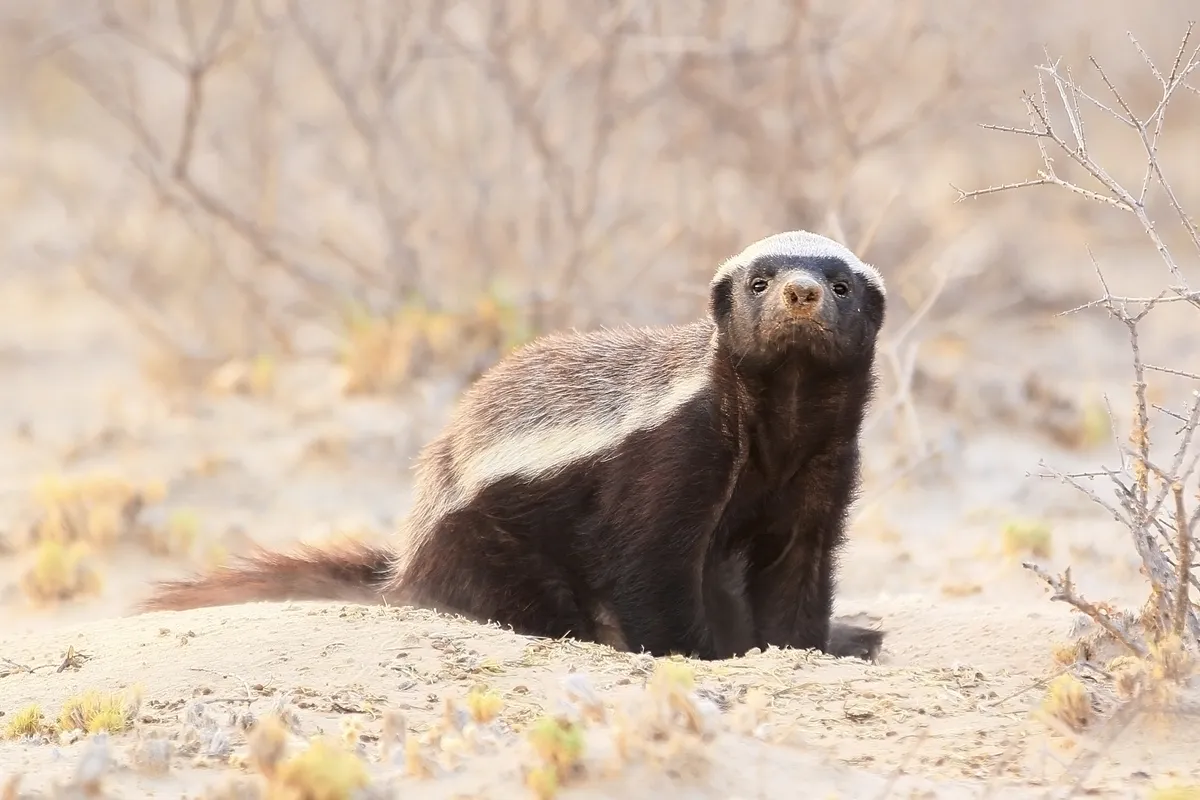Despite their reputation as the world’s most fearless animals, honey badgers try to avoid trouble. I have seen them bolt for a hole after sniffing fresh lion or leopard tracks.
Honey badgers usually only attack when surprised by predators, which often happens when they are digging – with poor eyesight and their noses in the ground, they can be oblivious to their surroundings. When startled they rush at their assailants, releasing a potent scent from their anal glands, rattling and standing tall with their hackles raised. This usually scares the predator away. Even if a badger is caught, its loose skin enables it to twist round and bite its attacker.

Though honey badgers are named for their habit of raiding beehives, they mainly hunt rodents, reptiles and insect larvae, along with the occasional antelope calf, cheetah cub and eagle chick.
Many of their prey species are venomous, including the puff adder and Cape cobra, and the badgers are thought to develop some immunity to venom over a lifetime of bites and stings. I encountered one individual that was bitten on the face by a puff adder. Despite a large swelling on his cheek, he was up and chasing snakes again just five hours later.